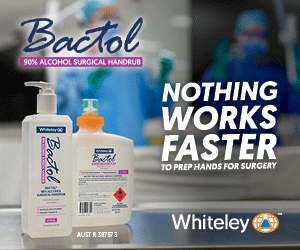As 2021 gets underway, there is a sense of uneasy calm in Aotearoa New Zealand. We are still witnessing harrowing images and stories of overwhelmed health systems overseas, as COVID-19 cases and deaths continue to rise. More virulent and transmissible strains from United Kingdom and South Africa have emerged.
Aotearoa has contained the virus, thanks to the strong initial government response and lock down. This has been maintained by the tireless work of infection prevention and control nurses, primary care nurses testing in the community, and those unsung heroes – nurses, caregivers and others – who are staffing the managed isolation and quarantine facilities (MIF and MIQ). NZNO organisers have been working hard with the nurses working in this unique and isolated situation, to ensure support, and that both professional and industrial concerns can be addressed effectively. Concerns, such as adequate personal protective equipment (PPE) and staffing, remain on the agenda in the new year.
Further precautions
We are now moving into another phase – keeping up all efforts to ensure the virus is kept out of the community and is contained at the border. With further precautions, it is hoped the virus cannot enter the country with returning residents, who are now required to have negative tests at country of origin and within a day of landing at the border. We are now also awaiting the roll-out of the vaccine.
NZNO will be working closely with the various parties planning for the largest public health vaccination programme in history, with vulnerable populations and health workers prioritised. Planning is now underway, with the Ministry of Health announcing last month that 2000-3000 new vaccinators will be required to implement the roll-out. Putting together such a workforce will be challenging, with pre-existing shortages across the health sector and the significant decrease in number of internationally qualified nurses able to enter the country. The response will need to be innovative. Nurses are highly skilled at leading such major projects – nurses implemented and delivered past programmes, such as nationwide measles and meningitis vaccination programmes.
Following media about the need for a major vaccination workforce, NZNO has been contacted by a number of members and non-members. The Nursing Council is now compiling a list of interested nurses for vaccination recruitment. The Immunisation Advisory Centre vaccinator courses will include training for COVID-19 vaccinators.
Last month we heard the news the country had been dreading – a case in the community; this time a returning resident from Tai Tokerau. It is believed the woman contracted the South African strain of the virus while in a MIF, which is deeply concerning. When Kai Tiaki Nursing New Zealand went to press, the woman was considered recovered and all her close contacts had tested negative.
This latest case calls into question the efficacy of the length of stay in MIF/MIQ facilities and illustrates the point NZNO has been making for a considerable time – that people can be asymptomatic or mildly symptomatic, yet still have the virus. Every effort must be made to protect border workers, as they are all that stands between the border and the public health and safety of five million people.
Over the holidays, COVID-19 complacency appeared to have crept in. While travelling, I witnessed a young woman going through security at the airport complaining that it was “silly” to have to wear a mask. Surely she has seen images of the crisis all around the world but must think it cannot or will not happen here. And I have observed a number of people on Auckland public transport not wearing masks.
Effective mask wearing
As health professionals, we have an obligation in this public health emergency to model good practice. This includes wearing a mask effectively when indicated, eg on public transport in Auckland and on all flights, and teaching others how to wear a mask properly. I have seen many examples of how not to wear a mask – with the person’s nose poking out over the top and my personal favourite, wearing the mask as a chin strap, with neither mouth or nose covered.
As health professionals we have an obligation in this public health emergency to model good practice.
The best defence for the community will not be vaccines alone – these are many months off. Our strongest defence is to protect ourselves and others, especially the most vulnerable. And ensuring the health system copes will be through good old-fashioned infection prevention and control measures – washing your hands, getting tested when you feel sick and staying home if you are sick. More contemporary public health measures – scanning wherever you visit and turning Bluetooth on if you have it – are also very important.
We will get through this. We need to work together to do everything we can to avoid the crisis and relentless distress our international colleagues have seen and, a year on, are still experiencing.




